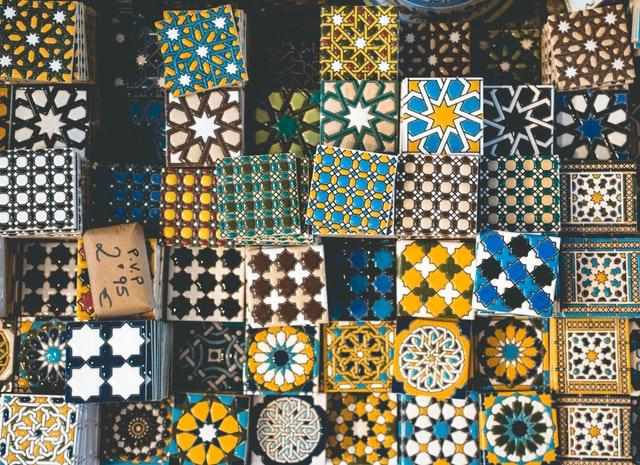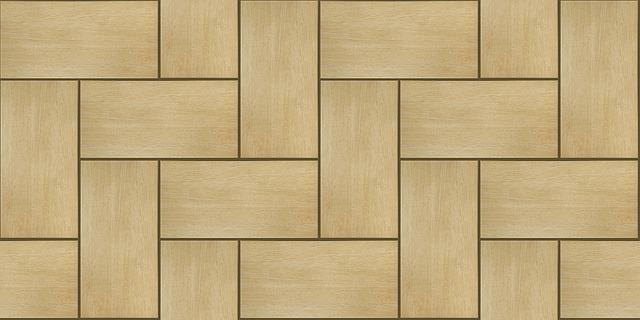Do you know what the terms “rectified” and “calibrated” mean when you find them in tile product descriptions and packaging information? Both words refer to methods used by manufacturers to ensure that tile sizes are constant.
Tile sizes that are consistent help to create much better installations. To help you understand these terms better, here’s a look at the definitions and comparisons of both terms.
Calibrated Tile
Calibrated tiles have become the industry standard tiles. Calibration is the process of precisely adjusting the tiles to the desired size. Cutting of the tile is usually done in such a way that the edges are created at a 90-degree angle. Other production dimensions, however, are theoretically possible.
What is the Process for Making Calibrated Tiles?
Unfired ceramic tiles are almost similar in size when they leave the press during the production process. The firing process in the kiln will cause the tiles to shrink by possibly a small varied percentage from piece to piece. Manufacturers sort tiles based on finished size using calibration.
Calibrated tiles are sorted to meet the caliber range specified by the manufacturer. These tiles must meet stricter dimensional variation requirements than natural tiles, but they do not have mechanically finished edges.
ProTip Takeaway: Natural stones and ceramic tiles are commonly calibrated.
Calibrated Tiles Size Requirements
Based on the industry’s strict sizing requirements, calibrated tiles are divided into two to four calibers. Calibrated tiles are generally allowed no more than +/-0.5% variation from the average dimension of the corresponding caliber.
They are also allowed no more than +/- 2mm variation from the average dimension of the corresponding caliber. Calibrated tiles may be available at a lower cost for projects with a tighter budget.

The joints between the tiles can be very small if the calibration is done to precision. However, this isn’t always desirable or necessary for example in the case of polygonal tiles laid in mosaic style. (Flooring Experts, 2021)
ProTip Takeaway: Calibrated porcelain tile has a size tolerance of little over 5/32″.
Rectified Tile
Rectified tile is fired ceramic or porcelain tile that has been cut or ground to exact size with the help of diamond saws. You can give tiles a sharp 90-degree edge by rectifying them. As a result, it’s simple to lay tile after tile, and the joints are very narrow, which is popular in the flooring industry.
What is the Process for Making Rectified Tiles?

They’re called rectified tiles since the technique actually corrects the sizes of the tiles. The result of baking or firing a ceramic tile is never accurate or predictable. The tiles may look identical when they enter the kiln but the change in moisture during the firing process is uncontrollable. This causes the tiles will shrink and warp significantly. Ceramic and porcelain tiles will always vary somewhat in shape and size when they come out of the kiln.
Rectified tiles are usually a little larger than they need to be before they go into the kiln. They may therefore be trimmed down to the exact size after they’ve been burned. The ‘rectification’ procedure entails either grinding the tiles or cutting the tiles with diamond saws.
Rectified tiles have mechanically finished edges in order to achieve a more precise facial dimension. It’s called an edge treatment because it only applies to the tile’s edges. Rectified tiles are always labeled as a quality feature with the word “Rettificato.” (Tile Outlets, 2016)
ProTip Takeaway: Rectification isn’t thought to be superior to other edge treatments. It’s simply a different treatment that results in a different appearance: trim, neat, and precise grout lines.
Calibrated Tile vs Rectified Tile
Calibrated Tile | Rectified Tile |
|---|---|
Calibrated tiles are available at a lower price. | Buying rectified tiles is a little more expensive. |
Calibrated tiles need larger grout lines | Rectified tiles allow for a fine grout line. |
Laying with calibrated tiles is much easier and allows for a more flexible joint width | When done correctly, it can be nearly seamless. |
The edges of a calibrated tile, on the other hand, are uneven. | Rectified tiles give a modern appearance because they have a smooth surface. |
Calibrated tiles allow for more creative grouting options. | Rectified tiles ofer a more modern appearance due to their smooth surface. |
Expensive to install | Rectified tiles can be used to create a very clean, even, and symmetrical look |
The calibrated tile has a much larger size tolerance | The rectified tile has a much smaller size tolerance |
Cost
Calibrated tiles are often available in the same colors, shapes, and patterns as rectified tiles, but at a lower price.
Buying rectified tiles is a little more expensive. Since rectified tiles require a little more effort to produce than non-rectified tiles of comparable quality, they usually cost a little more.
Grout Liines
Calibrated tiles need larger grout lines. Calibrated tiles require larger grout lines to make the tiles look more consistent, which detracts from the smooth, pristine appearance of your tiles.
Rectified tiles allow for a fine grout line. When compared to the edges of non-rectified tiles, the exact edges of rectified tiles may allow for smaller grout lines. It is recommended that rectified tiles be specified if thin grout lines are desired for an installation. (The Spruce, 2022)
ProTip Takeaway: Stick to calibrated tiles for your remodeling if you want to use contrasting grout colors to make your tiles stand out.
Nearly Seamless if Laid Right
Laying with calibrated tiles is much easier, especially for inexperienced people. This is because they allow for a more flexible joint width and require less precision.
When done correctly, it can be nearly seamless. The uniformity of rectified tiles makes installation easier. It can also make it easier to install unique tile designs and patterns.
ProTip Takeaway: The bottom line is that rectified tiles are simple to lay, but it also demands the use of precise procedures.
Appearance
Rectified tiles give a modern appearance because they have a smooth surface. This results in a very little grout joint, giving the impression that the entire floor is tiled. As a result, the tiles only require a small amount of grout.
The edges of a calibrated tile, on the other hand, are uneven. This gives the tile a more natural appearance, but it also needs a larger grout joint, giving it a more traditional tiled appearance.
Uniformity and Accuracy
Rectified tiles offer a more modern appearance due to their smooth surface. In the manufacturing process, a rectified tile is finished so that all sides are almost the same size, resulting in a tile that is uniform and accurate.
Calibrated tiles allow for more creative grouting options. Whatever you choose, we’re convinced you’ll love the finished tiled space. (Build, 2020)

Labor Cost
Rectified tiles are more expensive than calibrated tiles. If aesthetics are important to you, they’re the superior choice. You must also consider the cost of labor. Calibrated tiles take longer to lay than rectified tiles, so if you pay your tiler by the hour, you may end up spending the same amount.
Look very Straight and Square
Rectified tiles can be used to create a very clean, even, and symmetrical look because they’re so meticulously made.
Size
The calibrated tile has a much larger size tolerance than the rectified tile. When minimum grout joints are specified, this makes installation easier. The installer can use the ANSI requirements to his or her advantage if he or she has this knowledge.
Disadvantages of Rectified Tiles
Buying it is a little more expensive
Since rectified tiles require a little more effort to produce than calibrated tiles of comparable quality, they usually cost a little more. (Crossville, 2019)
Laying is more difficult
Rectified tiles are typically laid very close together with only a sliver of grout separating them. These minor variations may occasionally result in tiles that aren’t (or don’t appear to be) perfectly flush with one another.
When used on protruding edges, it is sharp and easily chipped
These tiles are also known as dimensionally stable tiles and are frequently referred to as ‘sharp edge’ tiles due to their sharp edges. Their sharpness makes them prone to chipping on their edges.
Lippage is more noticeable and problematic
Lippage occurs when one tile edge is slightly higher or slightly lower than the adjacent tile.
When is a Rectified Tile Necessary?
A rectified tile is used for two main reasons i.e. a larger tile size (more than 15″ or 16″ in either direction) and fewer grout lines. The almost-seamless effect on rectified tiles is achieved by the very thin grout line. If you choose a grout color that closely matches the color of your tile you’ll be able to see this seamless effect.
What to Expect From a Tile Installer?
Are your contractor and fitters familiar with the corrected tile installation process? For many years, calibrated tiles with wide grout lines have been the industry standard. As a result, not all flooring installers are qualified and competent in rectified tile installation.
Confirm ahead of time that the contractor is aware of your requirements. Be sure to also confirm that they have the necessary abilities and experience installing corrected tiles to complete the job correctly. Have your exact requests included in the contract, if possible.
Talk to a company such as Smart Remodeling LLC in Houston for tile installation. We understand that the precision required to create very tiny grout lines is very precise.
Want to Install the Best Tiles for your Home?
Knowing the differences between rectified and calibrated tile will help you feel more at ease during your tile installation. It will aid in the reduction of miscommunication between you, the homeowner, and the contractor. You’ll set reasonable goals for yourself.
Consult with your supplier and contractor to determine the best application for your project. If you live in Houston, Texas you can always call Smart Remodeling LLC for a free consultation on any tile issues you might have.
You can count on our professional advice and readiness to direct you in the correct way to get the best tiles for your home.






